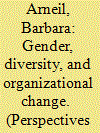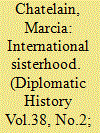| Srl | Item |
| 1 |
ID:
096278


|
|
|
|
|
| Publication |
2010.
|
| Summary/Abstract |
After growing for decades, the Boy Scouts and Girl Scouts both experienced a dramatic drop in membership during the 1970s. Since then their membership patterns have diverged as the Boy Scouts of America (BSA) continues to decline and the Girl Scouts of the USA (GSUSA) has reached near record numbers. These patterns raise two questions: Why the decline? And why the divergence? On the cause of decline, I argue that a younger civil rights generation, informed by a new set of post-materialist values, did not join traditional organizations like the BSA and GSUSA because their values were deemed to be outdated. The challenge for traditional organizations therefore was how to respond. Using path dependency theory, I argue that BSA and GSUSA-shaped by their own unique origins and identities-responded very differently to the critical juncture of the civil rights generation, which in turn explains the subsequent divergence in membership patterns from the 1980s onward. While the BSA rejects such changes in order to defend traditional values, the GSUSA, which established a commitment to challenging gender norms from its birth, embraces the new values and adapts virtually every aspect of its organizational identity to this new generation. As young people see themselves reflected back in the values endorsed by the GSUSA, its membership resurges, while the BSA continues to decline. I conclude by drawing out larger theoretical lessons on the meaning of change in American civil society in light of an increasingly diverse population.
|
|
|
|
|
|
|
|
|
|
|
|
|
|
|
|
| 2 |
ID:
132016


|
|
|
|
|
| Publication |
2014.
|
| Summary/Abstract |
After World War II, the Girl Scouts of the United States of America identified international friendship as a key component of its program. In 1957, the Girl Scouts partnered with their international counterparts, the World Association of Girl Guides, to establish Our Cabaña, an international meetinghouse in Cuernavaca, Mexico, where Girl Scouts could meet and befriend fellow members from around the globe. Soon after opening Our Cabaña, leaders noticed that some Girl Scouts repeatedly ignored rules about proper behavior in Mexico, and they feared that Scouts would alienate their Guide sisters and poorly represent the United States. This article asserts that responses to the problems at Our Cabaña demonstrate a critical shift in Girl Scouts' stance on what constituted a good girl ambassador; the organization evolved from promoting manners in intercultural settings to declaring that cultural sensitivity was necessary for girls to become global citizens.
|
|
|
|
|
|
|
|
|
|
|
|
|
|
|
|